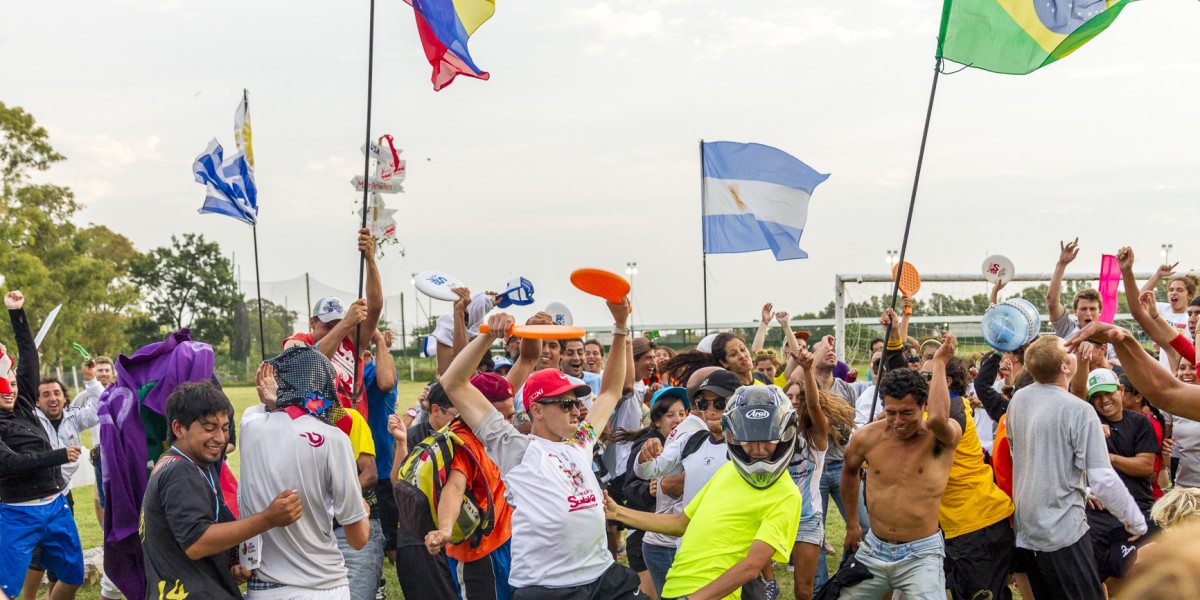
(Traducción en español más abajo)
For the past two years, I have spent Easter Sunday in Buenos Aires, Argentina, playing the knockout round of Espíritu Sudaka, a mixed tournament, which has quickly developed into the pinnacle of the Cono Sur ultimate scene. In its short four year history, the tournament has grown from almost 100 players and seven teams traveling from three countries, to nearly 200 players and eleven teams traveling from seven countries.
The first two editions of this tournament, then known as Torneo Truco, took place in Tigre, just north of the city of Buenos Aires. The first year saw mostly teams from Buenos Aires, as well as one team each from Chile and Uruguay, and the second year added a team from Brazil to bolster the international attendance, as well as another team from a different region of Argentina. 2012 brought a change in name and the official recognition and support from the city of Buenos Aires and with that, relocation inside the city. Espíritu Sudaka expanded the purpose of the tournament, adding a day of clinics, open/women’s show games before the first day of pool play, and WFDF SOTG score sheets for each game. Last year’s edition continued to show growth, adding two Argentine teams from outside the capital, a team from Venezuela, and a team patched together from locals and players that traveled from Peru and Colombia. The community of players in the region is very friendly, close-knit, and openly welcomes dedicated players that travel to the tournament without a team.
Even though these teams are geographically spread out, I feel as though they share a closer bond than the local college teams in my home of Upstate New York do. I think that South American culture, especially that of soccer (fútbol), is blending very well with that of ultimate as it grows below the equator. The first thing that really took me by surprise in my first Sudaka was how active spirit of the game is in each individual game. Not only do teams fill out spirit score sheets for each game, but the teams come together for a spirit circle and discuss the game, even if things got a bit ugly and out of hand. This is something I can’t even vaguely recall doing for a tournament that was deemed even remotely close to important in the United States.
Another surprise was trading gear with players from other teams on the final day. Adapted from soccer, and already practiced in big international tournaments, this could be implemented here in the US, and not just for ultimate, but all sports. After learning that players expect to make trades on the last day, I have since always brought extra jerseys, shorts, hats, and miscellaneous swag to swap.
Spirit games are always fun, especially seeing the joy on someone’s face when they learn them for the first time. Several of the South American players already know a lot of the typical ones (Wah, Miniature Tanks, Ninja, Bear-Ninja-Cowboy, Disc Jousting/Fencing, etc.) either from having traveled/lived in North America, or from the students and ex-patriates who play while abroad. Each year I learn a few more from fellow gringos and South American players that played them as kids at summer camps or family outings. A new idea from last year that I thoroughly enjoyed and will definitely copy here at home was one that took place during the down time between games, and even extended into the tournament party. One of the teams offered tickets, redeemable for rewards on the last day, for completing individual challenges issued by their players. Any player on the team could issue challenges, and they were always made up on the spot, never repeated for anyone else who asked that player for a challenge. They ranged from finding two sets of players with the same first name, to borrowing an article of clothing from an opposing team for a dance session in front of everyone at the tournament party. It was a fantastic way to have fun and interact with all of the players, even the ones you might have not played because they were in the other pool.
One interesting aesthetic of the tournament is the signpost at tournament central showing the destinations and distances that all the players have traveled to attend the tournament. (it would be even more impressive if it showed the hometowns of all of the players, since there are many who are living or studying abroad. There are always a few Americans from all parts of the country who usually bring college playing experience to their teams. The Europeans are but a handful, but always a great representation of their country’s ultimate. But by far, the largest populations of foreign ultimate players in the region are Colombian and Venezuelan. These two countries have the longest standing ultimate programs in Latin America, and their experience shines through as they help spread the sport to their southern neighbors.
Even though there is still a gap between the Colombian and Venezuelan teams, and those from further south, they are making progress. Although last year’s Pan-American Ultimate Club Championships (PAUCC) featured predominantly teams from Colombia and Venezuela, several Brazilian teams, and an Argentine/Uruguayan delegation were also in attendance. This gave them the opportunity to gauge their strength against stronger opponents, as well as see where they could end up if they keep growing and follow in the footsteps of their northern counterparts. Bundled together with PAUCC was the first leg of Latin America Tour (LAT) clinics Sockeye and Riot put on throughout the region. The Seattleites bookended their PAUCC attendance with appearances in São Paulo, Montevideo, Buenos Aires, and Santiago, which are all cities that are sending teams to Sudaka. The knowledge and experience gained from both PAUCC and the LAT clinics will surely help all of the programs in the Cono Sur progress and grow to that of Colombia/Venezuela, as well as manifesting as some solid performances at Sudaka this year.
This year’s edition of Sudaka will be different for a number of reasons. Not only will South American teams and players bring knowledge gained from PAUCC and the LAT clinics, but the tournament itself will be bigger than ever before. Even though only ten teams are attending as opposed to last year’s eleven, the number of players isn’t expected to drop. While some teams from last year will not be in attendance, the remaining teams have picked up the slack and grown in a relatively short period of time. Last year’s teams from Chile and Uruguay had players splinter off, recruit, and train hard enough to bring entirely new teams this year.
Putting together an entire mixed ultimate team in under a year, and in one case, four months, is very impressive. Especially impressive in a part of the world where everyone and their sister plays soccer, and the World Cup is looming in nearby Brazil. So why is this year different? Because the players have taken advantage of the learning opportunities presented to them last year, and now have the potential to not just show what they learned, but demonstrate that they can put it into practice and teach it to the new players in the region.
With that being said, let’s take a look at who’s participating in this year’s Espíritu Sudaka:

Big Red Ultimate Club – a.k.a. Big Red, Osos de Palermo
Buenos Aires, Argentina
Big Red have a six year history and have participated in all four editions of the tournament, winning in 2011 and making the finals in 2012, notably playing Brazzinga (São Paulo) in both of those finals. The team is in a rebuilding phase and is working on redefining their character and style of play. They are relying on their more experienced, foreign players to help teach and grow the local contingent, as well as the five. The roster is about 60% Argentine, with six Colombians, one Venezuelan, one Brazilian, and one American filling out the ranks. The Palermo Bears have been practicing three day a week, with strict goals in mind, win the tournament and show that losing the quarter-finals was a fluke.
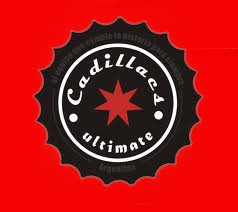
Cadillacs
Buenos Aires, Argentina
Cadillacs are another team with a six year history and have played all four previous editions of the tournament. Their name is a tribute to the Buenos Aires ska band Los Fabulosos Cadillacs, and the spirit and liveliness they play with is definitely comparable to ska music. The team has a wide spread of experience, with most players having a couple years under their belts, and a handful of veterans and rookies to even things out. Cadillacs also draw upon their foreigners for experience, with a majority of the team hailing from Colombia, but there are also a few Venezuelan and American players to compliment the local Argentines. Five players attended LAT Argentina and will bring those experiences back to the team. Besides personal conditioning, the team has been practicing two times a week to prepare for the tournament. Their goals for the tournament are focused more on team growth when compared to the other experienced teams. Cadillacs want to try out new strategies, get valuable in-game experience for rookies, reinforce team chemistry, and play hard to show good results from the hard work put in at practice.

Sapukay – a.k.a. Sapu
Buenos Aires, Argentina
Sapukay has been around for four years, and have played in all editions of Sudaka, making the finals in the first edition. The experience of the team is mixed between veterans and rookies, with some of the experience hailing from the foreign players. Six of the players attended PAUCC, five guys with Stinga and one girl with Elektras, and six attended LAT Argentina and hope to bring that experience with them. Argentines hold a slim majority on the roster, while a few Americans, Europeans, and Colombians round it out. The Sapus have been practicing two times a week, in addition to supplemental throwing routines. Their goals for this tournament are to play with discipline, stick to the philosophy the player-coaches have instituted, make sure all seven players on the field contribute, and hope that on-field success can make progress towards long term team growth.

V Ultimate – a.k.a. V
Buenos Aires, Argentina
V has also been around for four years, albeit under a different name, Disco Stu. The captains decided to change the name as reference to the Alan Moore comic and an inspiration to revolutionize ultimate in Argentina. They have participated in the last two editions of Sudaka, and were last years’ champions. Their roster has a fair amount of experience, especially from the foreign players who have played a lot in their home countries. Four of the players travelled to PAUCC with Stinga, and three attended LAT Argentina, experiences which will help V vie for another podium finish. The team is comprised of 3 Argentines, 3 Venezuelans, and 14 Colombians (a whopping 75% of the team). They have been practicing 3 times a week, putting in hard work to defeat their rivals and complete their single goal, defend their title.
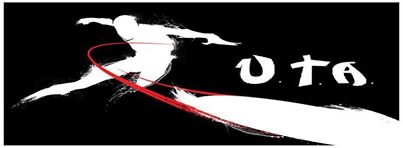
Ultimate Tres Arroyos – a.k.a. UTA
Tres Arroyos, Argentina
UTA is a new team, based just south of the city of Buenos Aires, in Tres Arroyos. They formed just over a year ago in December of 2012, and Sudaka will be their first international tournament. The team has a mix of young and old players, is almost completely Argentinian, and notably, about half the team works in or studies physical education. They do not have a lot of experience, with their first tournament being in October of last year in Bahía Blanca, Argentina. However, they are picking up a few experienced players whose teams will not be in attendance, which will help bolster their ranks as they plunge into international waters. They added two Argentines from Bahía Blanca, one from Moreno, and a Frenchman from La Plata. The goals they have set for this tournament are modest and fitting for a new team: play well, have great spirit, and maybe snag a couple wins.
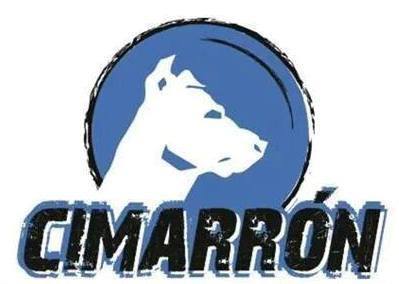
Cimarrón – a.k.a. Cima
Montevideo, Uruguay
Cimarrón is another team that has been around for four years. What started out as a group of friends who didn’t know much about the sport and decided to travel to Buenos Aires and play in Torneo Truco has developed into a team and pioneer of Uruguay ultimate. They have since participated in every edition of the tournament. Although the team’s average age is young adult, their range goes from children to Masters eligible players. Most of the team only has a year and a half experience, but the core of players has 4 or more years under their belt. Several players attended LAT Uruguay, and one played in PAUCC with Stinga, which will help the Uruguayans try to play more competitively. Only two foreigners play regularly for Cima, both North American, but two more will be picking up with them at Sudaka, both Argentine. The team has been practicing two days a week for the past three months, specifically for competing in this tournament, and scrimmaged against Águilas in the first club ultimate match up in the country’s history. They hope the hard training will help pay off towards achieving their goal of bringing the trophy home to Uruguay, but also want to enjoy the tournament and have a good time with the Cono Sur ultimate community.
Águilas are the newest team in the tournament, having just formed in December of last year. Sudaka is their first tournament together as a team, which is comprised of a large number of rookies. Two brothers who had only played with Cimarrón for a short time decided to branch off and start their own project, bringing a third Cima player along with them, to share experience and help guide the team. A few players attended LAT Uruguay, and that third Cima player that left for Águilas also attended PAUCC with Stinga, which are two things that might help this new team maybe get a win or two at their first tournament. They have been practicing since the team formed, and as previously mentioned, scrimmaged against Cima. Like the other new teams in the tournament, their goals are modest: bond and grow as a team, enjoy their first tournament.
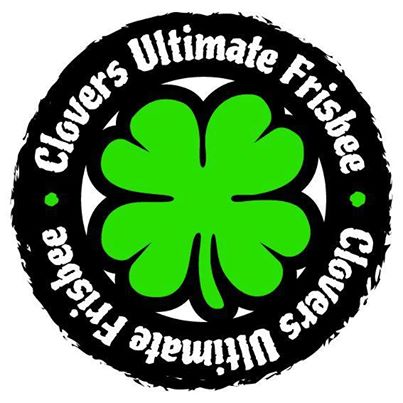
Clovers Ultimate Club – a.k.a. Clovers
Santiago, Chile
Clovers are only one year old, having formed right after last year’s Sudaka to play in fall league in Santiago, and this will be their first participation in the tournament. However, the core of its players has played together in previous editions of the tournament with Ultimate Chile/Pumanque, and also brings experience from their home countries and travels. The team age ranges from 22-34, which is a bit older than most of the other teams, but most of the players are closer to the younger end of that range. Approximately half the team is Chilean, with several players from Colombia, Venezuela, and USA, and one from Mexico to complete the roster. Five players attended LAT Chile and will bring that experience with them to the tournament. The team has been practicing 3 days a week, and scrimmaged Revolución to achieve their goals of making the knockout round and progressing through to the finals.
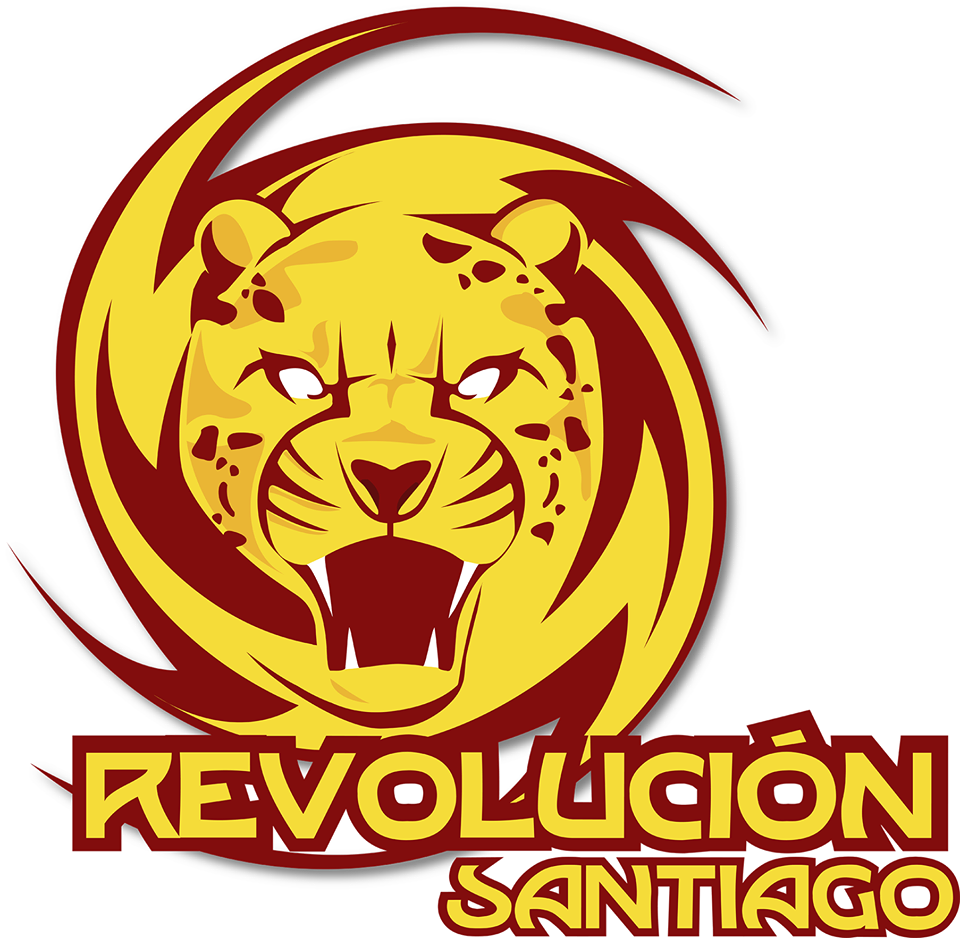
Revolución Santiago Ultimate Club – a.k.a. Revolución, Revo
Santiago, Chile
Revolución is the other new Chilean team on the block and will also be making their Sudaka debut. A few months younger than Clovers, Revo came to be after fall league in Santiago ended last year and two smaller teams fused together. Again, like their compatriots, the core of players played together in previous editions with Ultimate Chile/Pumanque. However, one thing that sets them apart from their local rivals is that they picked up seven players from another Chilean league team, Frisbulls, to bolster their ranks. With the supplemental players, the team traveling to Buenos Aires is 75% Chilean, with three Venezuelans, two Colombians, and one German rounding out the squad. They join Cima in having youth on their roster, with 2 of the Chilean players being under 18. Fifteen of their players attended LAT Chile, which should show its results when they get on field in Argentina. They have been practicing 3 days a week, and as previously mentioned scrimmaged against Clovers to prepare for the trip. Revo is focused and determined, and their goals reflect that: demonstrate that ultimate in Chile has stepped up to the next level by making the final.

Soulfrisbee – a.k.a. Familia Soul, Soul
São Paulo, Brazil
Soulfrisbee is five years old, and the most diverse of the teams participating, having fielded teams in Open, Women’s, and Mixed divisions competitions over the years. This will be their third participation in Sudaka, having previously made the semi-finals in 2012, and the finals last year. The players have experience from previous editions of the tournament, tournaments and leagues in Brazil, PAUCC 2013 with the Open and Women’s Soul teams, and the respective home countries of the foreign players. About 75% of the team is Brazilian, and the foreign contingency has one representative from each of the following countries, Argentina, Denmark, Italy, and USA. While Soul has ambition to reach the final again this year, they know the level of competition is rising, and still want to play with a lot of spirit and try out some new strategies and tactics along the way.
Note: The author will be playing with Clovers Ultimate Club.
—
Spanish translation by Flor Alcalde:
Durante los últimos dos años pasé el Domingo de Pascua en Buenos Aires, Argentina, jugando los octavos de final del Espíritu Sudaka, torneo internacional de categoría mixta que rápidamente se ha convertido en el centro de la escena del ultimate del cono sur. Con una breve historia de cuatro años, el torneo ha crecido de casi 100 jugadores y siete equipos provenientes de tres países, a cerca de 200 jugadores y once equipos provenientes de siete países.
Las primeras dos ediciones del torneo, en ese entonces conocido como Torneo Truco, tuvieron lugar en Tigre, al norte de la Ciudad de Buenos Aires. El primer año presenció principalmente equipos de Buenos Aires, así como también un equipo de Chile y uno de Uruguay, y el segundo año sumó un equipo de Brasil incrementando la presencia internacional, así como también un equipo del sur de la provincia de Buenos Aires. El año 2012 trajo consigo el cambio de nombre al mismo tiempo que el reconocimiento y aval de la Ciudad de Buenos Aires y, con ello, la relocalización del torneo en dicha Ciudad. Espíritu Sudaka amplió los propósitos del torneo sumando un día de clínicas, partidos apertura de categorías Open y Femenino antes de la fase de grupos, y las planillas de Espíritu de Juego de la WFDF para cada partido. La edición del último año continuó evidenciando crecimiento, añadió dos equipos argentinos procedentes de la Provincia de Buenos Aires, un equipo de Venezuela y uno fusión de jugadores locales y jugadores provenientes de Perú y Colombia. La comunidad de jugadores del cono sur es muy amigable, unida y ávida de recibir nuevos jugadores que viajan al torneo sin equipo.
A pesar de que estos equipos están dispersos geográficamente, percibo que comparten un vínculo mucho más estrecho que los equipos universitarios de Upstate New York donde vivo. Creo que la cultura sudamericana, especialmente la del fútbol, se está fusionando positivamente con la del ultimate, a medida que ésta se expande al sur del ecuador. En mi primer Sudaka, lo que me sorprendió inicialmente fue la persistente aplicación del Espíritu de Juego en cada partido. No sólo completan la planilla de Espíritu de Juego para cada partido, sino que los equipos también se reúnen en el círculo de espíritu y debaten sobre el juego, incluso si fue un poco desprolijo o si faltó autocontrol. No puedo siquiera recordar haber hecho algo así en un torneo en Estados Unidos donde fuera de tácito acuerdo, al menos, cierta importancia.
Otra sorpresa fue intercambiar camisetas con otros jugadores de distintos equipos al final del día. Tomado del fútbol, y ya tradicional en grandes torneos internacionales, podría implementarse aquí en Estados Unidos y no sólo para ultimate, sino para todos los deportes. Desde que aprendí que los jugadores esperan intercambiar uniformes el último día, llevo varias camisetas extra, shorts, gorras y misceláneos para trocar.
Los juegos de Espíritu siempre son divertidos, especialmente cuando ves la cara de felicidad de quien lo juega por primera vez. Muchos de los jugadores sudamericanos ya conocen muchos de los más tradicionales (Wah, Tanques en miniatura, Ninja, Oso-ninja-cowboy, Disc Jousting/Fencing, etc.) sea porque viajaron o vivieron en Norteamérica, o porque los aprendieron de estudiantes extranjeros y expatriados. Cada año aprendo más juegos, de colegas gringos y de jugadores sudamericanos que los jugaron de niños en campamentos de verano o salidas familiares. Una idea del año pasado, que disfruté plenamente y que voy a aplicar en Estados Unidos, tenía lugar en los períodos de tiempo libre entre partidos, y a veces se extendía incluso hasta la fiesta del torneo. Uno de los equipos entregaba tarjetas, intercambiables por premios en el último día, por cumplir desafíos individuales propuestos por un jugador de dicho equipo. Cualquier jugador del equipo podía dictar desafíos, los cuáles eran creados espontáneamente y nunca repetidos por alguien más que haya recibido un reto de ese mismo jugador. Los retos variaban desde encontrar dos grupos de jugadores con el mismo nombre, hasta pedir a un jugador oponente que te preste una prenda de su indumentaria para vestir mientras bailas frente a todos en la fiesta del torneo. Es una forma espléndida de divertirte e interactuar con otros participantes del torneo, incluso aquellos con los que no jugaste porque estaban en otro grupo clasificatorio.
Una interesante cualidad estética del torneo yace en el poste que está en la administración central, mostrando los distintos orígenes y distancias de proveniencia que los equipos viajaron para asistir al torneo. Teniendo en cuenta que hay muchos estudiantes extranjeros y expatriados, sería incluso más impresionante si mostrara las ciudades de cada participante. Siempre hay algunos estadounidenses de todas partes del país, que llevan su experiencia de ultimate universitario a sus equipos sudamericanos. Los europeos son no son muchos pero siempre hacien buena representación de su ultimate. Pero por lejos, la mayor cantidad de jugadores extranjeros son de Colombia y Venezuela. Estos dos países son los que tienen una historia más larga en proyectos de ultimate en América Latina y su experiencia es visible a lo largo y ancho de la región a medida que expanden el ultimate a sus países vecinos.
Aunque que todavía hay una brecha visible entre los equipos de Colombia-Venezuela y los de más al sur, éstos últimos están progresando, y a pesar de que el Campeonato Panamericano de Clubes de Ultimate (PAUCC – Pan-American Ultimate Club Championships) mostró una gran concurrencia de equipos de Colombia y Venezuela, varios equipos brasileños y una delegación argentino-uruguaya se hizo presente. Ello les otorgó la oportunidad de medir su solidez contra oponentes más fuertes y al mismo tiempo advertir hasta dónde pueden llegar si siguen los pasos de sus homólogos del norte. Junto con el PAUCC, se llevaron a cabo las clínicas del Tour Latinoamericano (LAT – Latinamerican Tour) que Sockeye y Riot llevaron a distintos puntos de la región. Los seattlélites remataron su participación en el PAUCC visitando São Paulo, Montevideo, Buenos Aires y Santiago de Chile, las ciudades que hoy envían equipos al Sudaka. Seguramente, la experiencia y el conocimiento ganados en el PAUCC y en las clínicas del LAT, van a favorecer a los proyectos del cono sur en su desarrollo y crecimiento al estilo Colombia y Venezuela, así como también permitirán manifestar un sólido desempeño en el Sudaka de este año.
La edición del Sudaka de este año será diferente por varias razones. No sólo los jugadores y equipos latinoamericanos llevan al torneo lo aprendido en PAUCC y LAT, sino que además, el torneo en sí tendrá una amplitud más vasta de la que ha tenido hasta ahora. A pesar de que este año habrá diez equipos en vez de los once del año pasado, no se espera un declive la cantidad de jugadores. Mientras que algunos equipos del año pasado no asistirán este año, los equipos restantes han asimilado los jugadores dispersos y han crecido en un período de tiempo relativamente corto. Los jugadores de los equipos de Chile y Uruguay del año pasado se abrieron reclutando nuevos jugadores y entrenándolos duro para portar equipos totalmente nuevos al Sudaka.
Armar de cero un equipo mixto de ultimate en menos de un año, y en uno de los casos en cuatro meses, es sorprendente. Y es especialmente sorprendente en una región del planeta donde todo el mundo juega fútbol y donde la Copa Mundial se avecina desde Brasil. ¿Entonces por qué es diferente este año? Porque los jugadores tomaron ventaja de las oportunidades de aprendizaje que se les presentaron el año pasado, ahora tienen el potencial no sólo para mostrar lo que aprendieron, sino también para demostrar que pueden poder en práctica y enseñar lo aprendido a nuevos jugadores de la región.
Dicho esto, echemos un vistazo a los participantes de este año del Espíritu Sudaka:
Big Red Ultimate Club – a.k.a. Big Red, Osos de Palermo
Buenos Aires, Argentina
Big Red está en su sexto año de historia y ha participado de las cuatro ediciones del torneo, obteniendo la victoria en 2011 y llegando a la final en 2012, frente a Brazzinga (São Paulo) en ambas finales. El equipo está en una fase de renovación y trabajando en la redefinición su carácter y estilo de juego. Se sustentan, por un lado, de los jugadores extranjeros más experimentados que comparten su conocimiento y ayudan al crecimiento del plantel, y por el otro, de los cinco jugadores que asistieron al PAUCC con Stinga. El roster se compone de un 66% de argentinos, seis colombianos, un venezolano, un brasilero y un estadounidense para completar la línea. Los Osos de Palermo han estado entrenando tres días a la semana, teniendo presentes metas concretas: ganar el torneo y demostrar que haber perdido los cuartos de final fue sólo anecdótico.
Cadillacs
Buenos Aires, Argentina
Cadillacs también cuenta con seis años de historia y jugó las cuatro ediciones del torneo. Su nombre es en tributo a la banda ska de Buenos Aires, Los Fabulosos Cadillacs, y definitivamente su espíritu y alegría es equiparable a la música ska. El equipo tiene experiencia, la mayoría de los jugadores cuentan con varios años de juego bajo la manga, más algunos veteranos y novatos para equilibrar la balanza. Cadillacs también se sostiene de la experiencia de sus jugadores extranjeros, la mayoría del equipo es proveniente de Colombia, pero también hay algunos venezolanos y estadounidenses que acompañan a los argentinos. Cinco de ellos asistieron a las clínicas de LAT Argentina y volcarían esta experiencia hacia su equipo. Además del acondicionamiento físico individual, el equipo ha estado entrenando dos veces a la semana para prepararse para el torneo. Sus metas para el Sudaka están centradas en el crecimiento del equipo tomando como medida a planteles más experimentados. Cadillacs espera poner en juego nuevas estrategias, obtener valiosa experiencia de juego para los novatos, reforzar la química de equipo y jugar fuerte para mostrar el buen resultado del trabajo duro que puso en práctica.
Sapukay – a.k.a. Sapu
Buenos Aires, Argentina
Sapukay ha estado en escena por cuatro años. Participó en las cuatro ediciones del Sudaka llegando a finales en la primera edición. La experiencia del equipo se conforma por la unión de veteranos y novatos, con algo de influencia proveniente de jugadores extranjeros. Seis de sus jugadores asistieron al PAUCC, cinco hombres con Stinga y una chica con Elektras, y seis concurrieron a LAT Argentina esperando llevar consigo lo instruido. La amplia mayoría es argentina, mientras que algunos estadounidenses, europeos y colombianos terminan de cerrar el roster. Los Sapus han estado entrenando dos veces por semana sumando rutinas de lanzamiento complementarias. Sus metas para este torneo son: jugar disciplinadamente, atenerse a la filosofía que los entrenadores y jugadores construyeron, asegurarse de que los siete jugadores en cancha contribuyan al juego y esperan que el éxito en cancha lleve al progreso a largo plazo del equipo.
V Ultimate – a.k.a. V
Buenos Aires, Argentina
V también ha estado presente desde hace cuatro años, sólo que bajo un nombre distinto, Disco Stu. Los capitanes decidieron cambiar el nombre haciendo referencia al comic de Alan Moore y como inspiración para revolucionar el ultimate en Argentina. Han participado en las últimas dos ediciones del Sudaka y fueron los campeones de la última. Su roster cuenta con una cantidad apreciable de experimentados, especialmente extranjeros con historia en su país natal. Cuatro de sus jugadores viajaron al PAUCC con Stinga y tres asistieron al LAT Argentina, experiencias que ayudarían a V competir por un puesto en el podio. El equipo está compuesto por tres argentinos, tres venezolanos y catorce colombianos (un gran 75%). Ellos han estado entrenando tres veces a la semana, trabajando duro para ganarle a sus rivales y cumplir su única meta, defender el título.
Ultimate Tres Arroyos – a.k.a. UTA
Tres Arroyos, Argentina
UTA es un equipo nuevo, localizado al sur de la Ciuadad de Buenos Aires, en Tres Arroyos. Fue fundado hace un año en Diciembre del 2012 y el Sudaka será su primer torneo internacional. El equipo es un mix de jugadores jóvenes y adultos, casi completamente argentino y, destacadamente, casi la mitad del equipo trabaja o estudia educación física. No cuentan con mucha experiencia, habiendo sido su primer torneo en Octubre del año pasado en Bahía Blanca, Argentina. Sin embargo, están reclutando algunos jugadores experimentados cuyos equipos no participan del torneo, lo cual los ayudará a reforzar su nivel al zarpar hacia aguas internacionales. Ellos sumaron dos argentinos de Bahía Blanca, uno de Moreno y un francés de La Plata. Las metas que se propusieron para este torneo son modestas y a la medida de un equipo nuevo: jugar bien, tener buen espíritu y quizás obtener un par de victorias.
Cimarrón – a.k.a. Cima
Montevideo, Uruguay
Cimarrón es otro equipo de cuatro años. Lo que era un grupo de amigos que no sabían mucho sobre el deporte y decidieron viajar a Buenos Aires a jugar el Torneo Truco, se convirtió en el equipo pionero del ultimate en Uruguay. Desde entonces participaron en cada edición. Aunque en promedio son adultos jóvenes, el rango de edades va de infantil a Master. Muchos de ellos tienen una experiencia de año y medio, pero el núcleo de jugadores tiene cuatro años o más bajo la manga. Varios jugadores asistieron al LAT Uruguay y uno jugó el PAUCC con Stinga, que ayudaría a los uruguayos jugar más competitivamente. Solo dos extranjeros juegan habitualmente para Cimarrón, ambos norteamericanos, pero dos más se sumarán a ellos en el Sudaka, ambos argentinos. El equipo ha estado practicando dos días a la semana durante los últimos tres meses, especialmente para competir en este torneo, y se enfrentaron contra Águilas en lo que fue el primer encuentro de dos clubes en la historia del ultimate del país. Ellos esperan que el entrenamiento les dé buenos resultados en vistas de su meta, traer el trofeo a Uruguay, pero también quieren disfrutar el torneo y pasar un buen rato con la comunidad del cono sur.
Águilas
Montevideo, Uruguay
Águilas son los más nuevos del torneo, constituidos recién en Diciembre del año pasado. El Sudaka es su primer torneo como equipo, el cual está compuesto de una gran cantidad de principiantes. Dos hermanos que habían jugado para Cimarrón sólo por un breve período, decidieron abrirse para empezar su propio proyecto, llevando un tercer jugador de Cima con ellos para que comparta su experiencia y coopere a guiar al equipo. Algunos jugadores asistieron a LAT Uruguay, y aquél tercer jugador de Cima que ahora es Águilas, también asistió al PAUCC con Stinga, dos cosas que quizás pueden ayudar a este nuevo equipo a obtener una victoria o dos en su primer torneo. Ellos han estado entrenando desde que se formó el equipo y, como mencioné previamente, se enfrentaron a Cima. Al igual que los demás equipos nuevos del torneo, sus metas son modestas: unirse y crecer como equipo, disfrutar su primer torneo.
Clovers Ultimate Club – a.k.a. Clovers
Santiago, Chile
Clovers tiene sólo un año, fue formado justo después del Sudaka del año pasado para participar en la liga de otoño en Santiago y ésta es su primera participación en el torneo. Sin embargo, el núcleo fuerte de sus jugadores participó en ediciones previas del torneo con Ultimate Chile – Pumanque, y también cuenta con experiencia de sus países de procedencia y viajes. Las edades rondan los 22 a 34 años, un poco más que el resto de los equipos, pero la mayoría de los jugadores se acercan más al extremo joven del rango de edades. Aproximadamente la mitad del equipo son chilenos, con varios jugadores de Colombia, Venezuela, Estado Unidos, y uno de México completando el roster. Cinco jugadores asistieron a LAT Chile y llevarán esa experiencia consigo al torneo. El equipo ha estado entrenando tres días a la semana y se enfrentó a Revolución para cumplir su meta: ganar los octavos de final para pasar a finales.
Revolución Santiago Ultimate Club – a.k.a. Revolución, Revo
Santiago, Chile
Revolución es el otro equipo nuevo de chile en el menú y también harán su debut en el Sudaka. Sólo algunos meses más jóvenes que Clovers, Revo surgió después de la liga de otoño en Santiago del año pasado, a partir de la fusión de dos equipos más pequeños. De igual manera que sus compatriotas, el núcleo fuerte del equipo participó en ediciones previas junto a Ultimate Chile – Pumanque. Sin embargo, lo que los diferencia de sus rivales locales es que incorporaron siete jugadores de otro equipo de liga chileno, Frisbulls, para reforzar su línea. Incluyendo a los jugadores incorporados, el equipo que viaja a Buenos Aires es 75% chileno, con tres venezolanos, dos colombianos y un alemán para redondear el plantel. Acompañan a Cima con la incorporación de jugadores jóvenes al roster, dos de sus jugadores son menores de dieciocho años. Quince de sus jugadores asistieron a LAT Chile, lo cual, en Argentina, debería reflejarse en sus resultados en cancha. Ellos han estado entrenando tres días a la semana y se enfrentaron a Clovers como preparación para el viaje. Revo está enfocado y decidido, sus metas lo evidencian: alcanzar la final para mostrar el ultimate en Chile ha evolucionado.
Soulfrisbee – a.k.a. Familia Soul, Soul
São Paulo, Brasil
Soulfrisbee tiene cinco años y es el más variado de los equipos participantes, teniendo en campo divisiones Open, Femenino y Mixed en distintas competencias a través de los años. Será su tercera participación en el Sudaka, previamente habiendo alcanzado las semifinales en el 2012 y la final el año pasado. Los jugadores tienen experiencia de anteriores ediciones del torneo, otros torneos y ligas de Brasil, PAUCC 2013 en las categorías Open y Femenino, y la correspondiente experiencia de los países nativos de sus jugadores extranjeros. Casi el 75% del equipo es brasileño y el contingente extranjero cuenta con un representante de cada uno de los siguientes países: Argentina, Dinamarca, Italia y Estados Unidos. A la vez que quiere alcanzar las finales nuevamente este año, Soul sabe que el nivel competitivo está incrementándose y se propone, de todas maneras, jugar con gran espíritu y aprovechar para poner en práctica algunas estrategias y tácticas nuevas.
Nota: El autor formará parte de Clovers Ultimate Club.

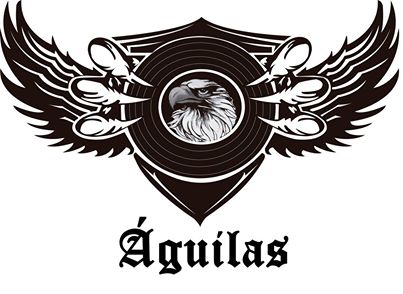









Comments Policy: At Skyd, we value all legitimate contributions to the discussion of ultimate. However, please ensure your input is respectful. Hateful, slanderous, or disrespectful comments will be deleted. For grammatical, factual, and typographic errors, instead of leaving a comment, please e-mail our editors directly at editors [at] skydmagazine.com.